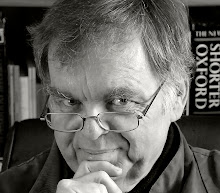Photoshop was in version 3 where I first encountered it, back in 1995, although I had been using an early version of Corel Photo Paint before that.
By the early 1990s, unless one was a hobbyist, scientist, freelance photo-journalist, print media service bureau, very high end commercial shooter or low volume/big ticket fine arts photographer, having a private wet processing lab was on the way out. Running a traditional analogue darkroom had become altogether too cost inefficient, too slow and too impractical for anyone not prepared to work in it full time and gear up for genuine volume. Commercial lab businesses quickly became the way to go for most suburban wedding, school, portrait, ad stock and community event shooters.
This was especially true for advertising outfits which did a variety of things in addition to straight photography. I had been taught essential darkroom skills when I was young but by the time I had a NEED to actually process film, the very idea had passed its use-by-date. Besides, transparencies were favoured for quality print publishing and they had to be processed for us at Kodak or Pacific Labs. Then again, clients often brought in their own trannies, negatives or prints to scan.
By the mid 1990s, for an increasing number of camera jockeys, the Photoshop "digital darkroom" had become the ONLY practical darkroom - many years before modern digital cameras ever came along. If one wanted to optimise an image's exposure, remove or replace a background, get rid of dust & scratches, air brush a model's cheek, enhance contrast or saturate colour, chances were that a traditional film photographer was using a digital darkroom like Photoshop, for the purpose.
Adobe Photoshop is and has always been an essential part of the serious photography/print media process. The work of legendary photographers like Ansel Adams and Frank Hurley were very much about wet darkroom post processing. There is no doubt in my mind that had film scanners and Photoshop been around in their day, both men would have been using them on a routine basis.
It is a little weird, therefore, to encounter the post processing counter culture which has appeared among amateurs in the last few years. You've all seen and heard it. Somehow, people who use Photoshop are cheats, defrauders and generally weak photographers who, (unlike presumably strong MACHO photographers) need to be propped up by "artificial" means. I get a little sick and tired of having some of my best work criticised by macho amateurs along the lines of "..... it's all right I suppose but you Photoshopped it .... you DID didn't you? .... you can't fool me".
Sigh! Spare us these people - PLEASE!
In the next blog I will address myself directly to those for whom "Photoshopped pictures" somehow don't really count.
See my work at: www.pbase.com/davidhobbs


No comments:
Post a Comment